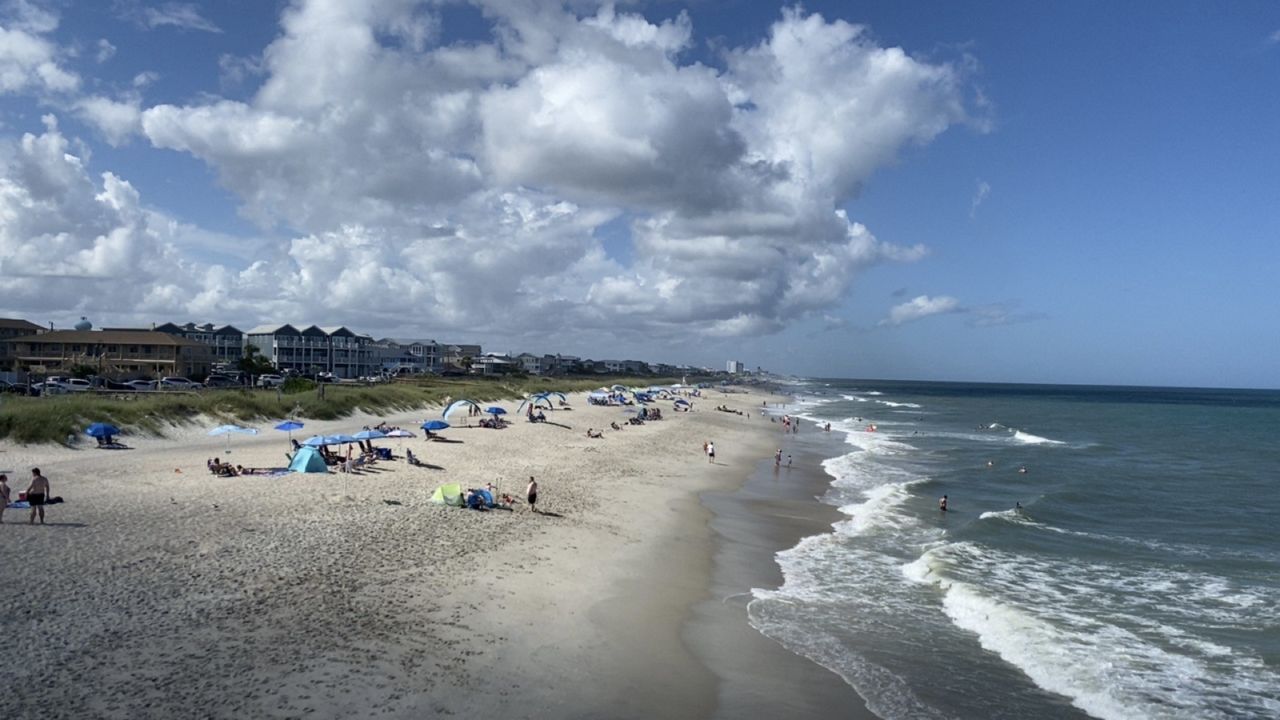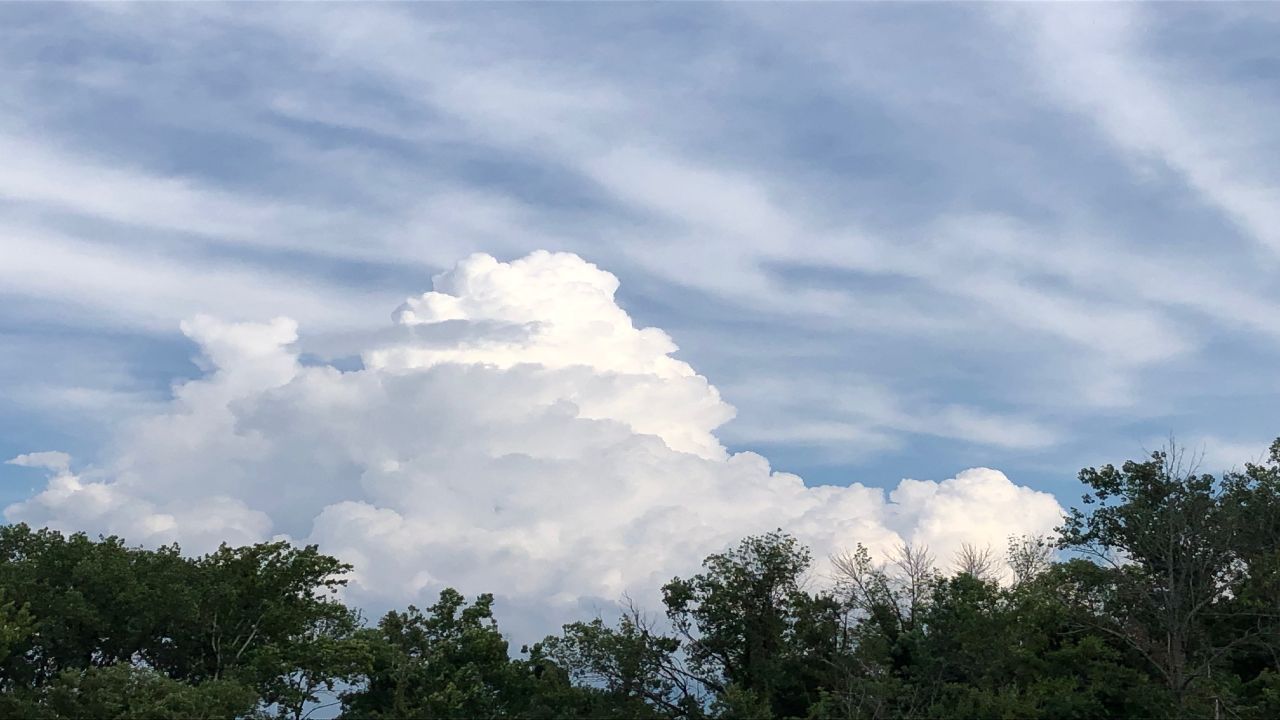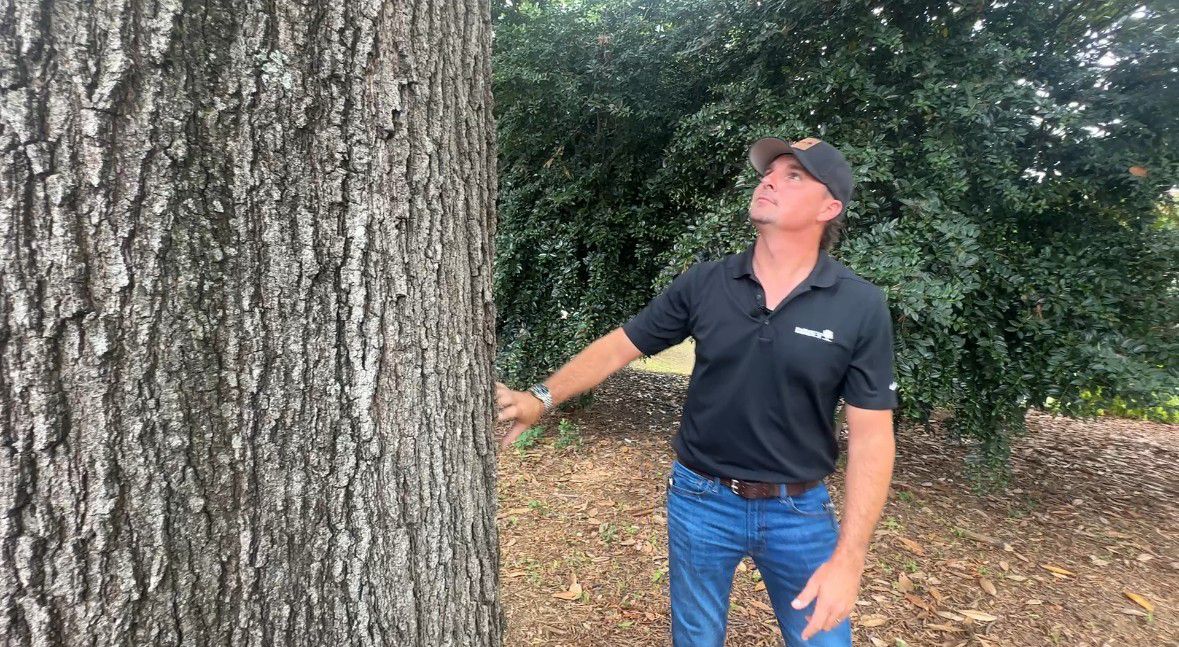The North Carolina Division of Services for the Deaf and Hard of Hearing (DSDHH), which falls under the state's Department of Health and Human Services, counts around 1.3 million people in the state with hearing loss.
While there are many ways to receive notifications for severe weather in the 21st century, those who are hearing impaired cannot depend on sound alone to let them know a potentially hazardous weather event is heading their way.
Members of the deaf community said navigating this challenge can sometimes feel impossible without any modern technology.
It's something David Armas can relate to. “I don’t really know anything else,” Armas said.
Armas, 14, said he was born deaf and had surgery for cochlear implants when he was a baby.
“I try to not take it off for long periods of time because I won’t be able to hear something like a fire alarm,” Armas said.
Without looking at his ears or the black device attached to the back of his head, this teenager appears like any other boy his age.
The middle schooler said having them, however, still doesn’t eliminate all difficulties. “[It can be a] little bit stressful sometimes because it’s a lot more complicated. There’s a lot more things you have to rely on,” Armas said.
He has to rely on the help of his family and the bed shaker connected to his alarm clock. The bed shaker, placed below his mattress, sends a great vibration every morning he has school to wake him up. “This thing,” Armas said as he picked up the bed shaker from under his bed, “it vibrates a lot.”
Cochlear implants and the bed shaker are two resources his Guatemalan-American mother, Keila Armas-Velasquez, is grateful for. She said she immediately began looking for answers when she learned her son would not be able to hear her without some assistance.
“When I just found [out] my son was born with a profound hearing loss, it was really hard for me because I also didn’t speak English at that time,” Armas-Velasquez said.
They are part of a group that depends on alerts during severe weather too.
Because so many with total hearing loss and severe hearing issues either don’t or can’t wear cochlear implants, Rebecca Rosenthal of the DSDHH said knowing what to do during an emergency can be tricky.
Rosenthal grew up before the advent of mass notification systems and modern aids.
“We had to rely on friends and family and people to just let us know bad weather was coming,” Rosenthal said.
Rosenthal was also born deaf, and has spent most of her adult life advocating for more resources for deaf people. Her years of experience guiding fellow members of the deaf community to resources are now in use as the telecommunications program manager for the NC DSDHH.
“We have seven regional centers within our division that cover all 100 counties in North Carolina. Each of the regional centers has several staff members to help consumers,” Rosenthal said.
Rosenthal said these regional centers are staffed with a community accessibility specialist, a telecommunications consultant, a deaf services specialist, a hard of hearing services specialist and an interpreter services specialist.
The DSDHH has an equipment distribution service that can provide specialized telecommunications equipment, if you qualify, along with demonstrations of the equipment.
Rosenthal is fluent in sign language. It’s how she explains how specialized tools work with an interpreter to translate.
Rosenthal said it is good to build some familiarity with the functionality of your standard weather radio. “There are three types of alerts: one is a warning, one is a watch and one is an advisory that may come up on the screen,” Rosenthal said as she pointed to the top of the weather radio screen.
For a deaf person to be alerted, they must plug a jack into the back of the weather radio to establish a connection to a transmitter.
“To get the signaling to go to the alerting devices you have to have a transmitter,” Rosenthal said. The transmitter can fit into your hand and comes with the alerting device.
This transmitter can relay critical weather information to an all-in-one alarm clock, triggering a strobing light and a powerful vibration from the bed shaker.
Rosenthal called these "life-saving pieces of equipment."
“Because if you are sleeping during the middle of the night, that flash or that shake underneath your mattress will wake you up,” Rosenthal said.
Now Armas-Velasquez said she feels a lot better knowing modern technology like this is within reach in case of a storm.
“That is always something that is on my mind. Especially as a mom. I always worry about him and how he will do in case of an emergency,” Armas-Velasquez said.
Even after receiving an alert, Rosenthal encourages people to check other trusted sources to get more detailed information, like those found on readync.gov. At the bottom of the website, a stay informed section allows users to find your local county and subscribe to alerts in a range of ways.
The Federal Communications Commission (FCC) mandates local stations caption emergency information in both audio and visual formats.
Rosenthal said the evolution of technology is a blessing. “And also, if you live in an area that has poor cellular service or poor internet service, these are really great devices. These are the best options to get weather alerts,” she said.
Two other deaf women agree. Lillian Russell McMillan and Rose Hawley both live in Wilson County.
They each described times in the past when they were only as informed as the family around them. Hawley and McMillan said they often learn about weather warnings through television news by following closed-captioning. Some styles of phone notifications, like a quick bright flashing light or turning on vibrations for messages and incoming calls, play as pivotal a role as their family.
“I've been clueless for a very long time until this event technology has taken off, you know? You know, back then, maybe friends would tell you, you know, because of hearing people in their family would tell them stuff. And then they just passed on from person to person,” McMillan said.
The retired women say they appreciate living in the present with more modern amenities versus a time when mass notification systems were not around. Both say there is great room for the general public to learn much more about deaf culture.
“Everybody should accept everyone. Everybody should be open-minded and we should be able to collaborate and be unified. And, you know, I welcome people to wanting to learn more about deaf culture,” Hawley said.
This includes communities within the deaf community.
Armas-Velasquez said learning English in a country where Spanish is a lesser spoken language can make it difficult to find resources a family needs. To maneuver through the language barrier, the mother turned to social media to create a page for ESL families.
“I wanted to start that community to know the families with the same situation as I was,” Armas-Velasquez said.
Her Facebook group is called Triunfa Caracol Latino.
“That has been very helpful for all the families because now they say now I know I’m not alone,” Armas-Velasquez said.





)


